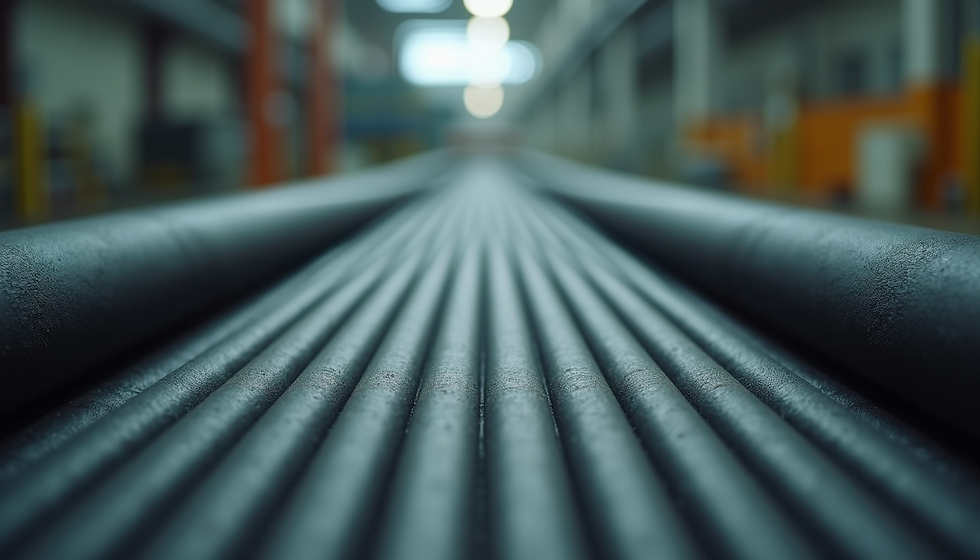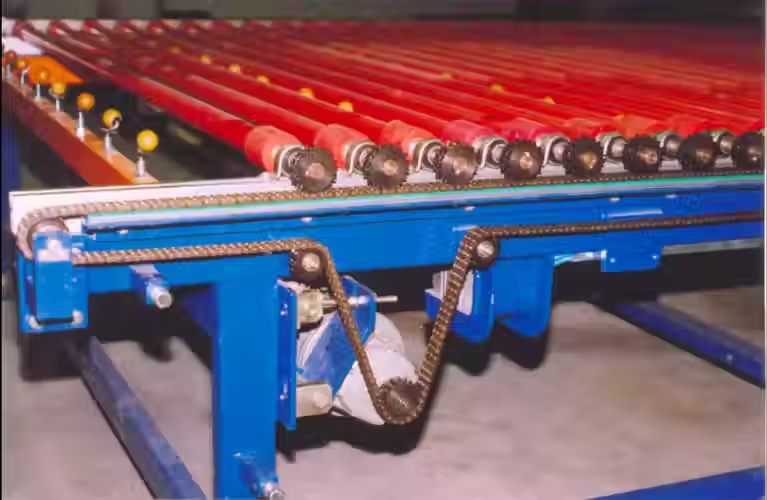Belt Conveyor - Bharath Engineering Works
- Shridhar GK

- Apr 5
- 4 min read
Contact : +91 9986340293
Belt conveyors are essential in various industries, facilitating the smooth movement of materials. At Bharath Engineering Works, cutting-edge engineering and robust designs come together to provide a variety of belt conveyor solutions catering to diverse applications. In this blog post, we explore the technology that drives these conveyors, focusing on their design, operation, and benefits.
The Basics of Belt Conveyors
Belt conveyors are straightforward yet highly effective systems designed to transport materials efficiently from one location to another. They consist of a continuous loop of material—commonly rubber or fabric—powered by pulleys. Despite their simple appearance, the technology behind them is quite advanced, making these conveyors popular across sectors such as manufacturing, logistics, and construction.
Known for their durability and low maintenance needs, belt conveyors are favored for their adaptability. They can be customized to meet the unique requirements of various industries, increasing their effectiveness. For instance, a typical belt conveyor can transport up to 2,000 tons of material per hour, depending on its design and the application.

Key Components of Belt Conveyors
Conveyor Belt
The conveyor belt is arguably the most crucial part of the system. Made from materials like rubber or PVC, the choice of the belt depends on factors such as the type of materials being transported and the conditions under which they operate. A rubber belt might be chosen for heavy-duty applications, while a PVC belt could be ideal for lighter materials.
In addition to the material choice, the width and thickness of the belt significantly influence its capacity and operational speed. For example, a belt measuring 60 inches wide can accommodate more substantial loads compared to a 24-inch belt.
Pulleys and Rollers
Pulleys are essential for driving the belt, while rollers help minimize friction, allowing for smooth movement. Generally, there are two types of pulleys: drive pulleys, which move the belt, and take-up pulleys, which maintain belt tension.
Roller designs also vary, including metal and plastic options. Their arrangement supports the belt and the materials being transported, aiding in the conveyor’s overall efficiency.
Motors and Control Systems
The motor powers the belt's movement. Depending on the specific application, different motor types may be used, ranging from electric variants for standard operations to hydraulic motors for heavy-duty tasks. Advanced control systems enable automation and integration with existing production lines. For example, modern systems can adjust speed based on the load, ensuring smooth operations.
How Belt Conveyors Work
Belt conveyor operation is relatively simple but relies on precision engineering. Once material is loaded onto the belt at the feeding point, the belt transports it to the designated destination.
Sensors and automation technologies improve the system's efficacy. For example, load sensors can prevent overloading, while variable speed motors help manage flow. This seamless operation is vital for maintaining workflow in manufacturing and distribution centers.
Advantages of Belt Conveyors
Efficiency: Belt conveyors can move significant volumes of materials over long distances with minimal energy. For instance, they can transport up to 50,000 pounds of product in a single run, depending on the configuration.
Customization: The ability to design and modify components based on specific needs makes belt conveyors highly versatile.
Cost-Effective: Their low maintenance and operational costs offer a solid return on investment, especially in systems that handle large quantities of material daily.
Safety: Modern designs incorporate safety features such as emergency stop buttons and protective guards, ensuring operator safety.
Flexibility: These conveyors can be installed in various orientations, such as horizontal, inclined, or declined, allowing for adaptable layout designs.
Key Applications of Belt Conveyors
Belt conveyors play a vital role across various industries:
Manufacturing: They help transport raw materials and finished products along production lines, enhancing productivity.
Mining: Belt conveyors efficiently move mined materials from the extraction site to processing facilities, reducing manual labor and increasing throughput.
Logistics and Warehousing: In warehouse settings, they streamline the movement of goods and facilitate better inventory management.
Agriculture: Used in operations like grain handling, where bulk materials need to be moved quickly and efficiently.
With applications across multiple sectors, the demand for reliable belt conveyors continues to rise.
Innovation and Future Trends
Conveyor technology is constantly advancing. Bharath Engineering Works consistently seeks to embrace these innovations. Recent advancements include integrating IoT (Internet of Things) for real-time monitoring, predictive maintenance to reduce downtime, and utilizing lightweight materials for better performance.
Sustainability is also a growing focus area. Future developments may introduce eco-friendly materials and energy-efficient systems to align with global environmental initiatives. A recent survey indicated that 75% of industry leaders are actively exploring sustainable practices in their operations.
The Importance of Belt Conveyor Technology
Belt conveyors are crucial assets for many industries, ensuring efficiency and reliability in material handling. Bharath Engineering Works is at the forefront of this technology, offering state-of-the-art solutions customized to meet diverse industrial needs.
As technology continues to evolve, the potential for further improvements in design and efficiency will expand, reinforcing the significance of belt conveyors in the global market. Whether for manufacturing, logistics, or agriculture, belt conveyors remain vital for moving materials effectively, contributing to operational success for businesses worldwide.

Choosing the innovative solutions provided by Bharath Engineering Works can enhance operational efficiency and streamline processes, making it a worthy consideration for any industry that relies on material transport.



Comments